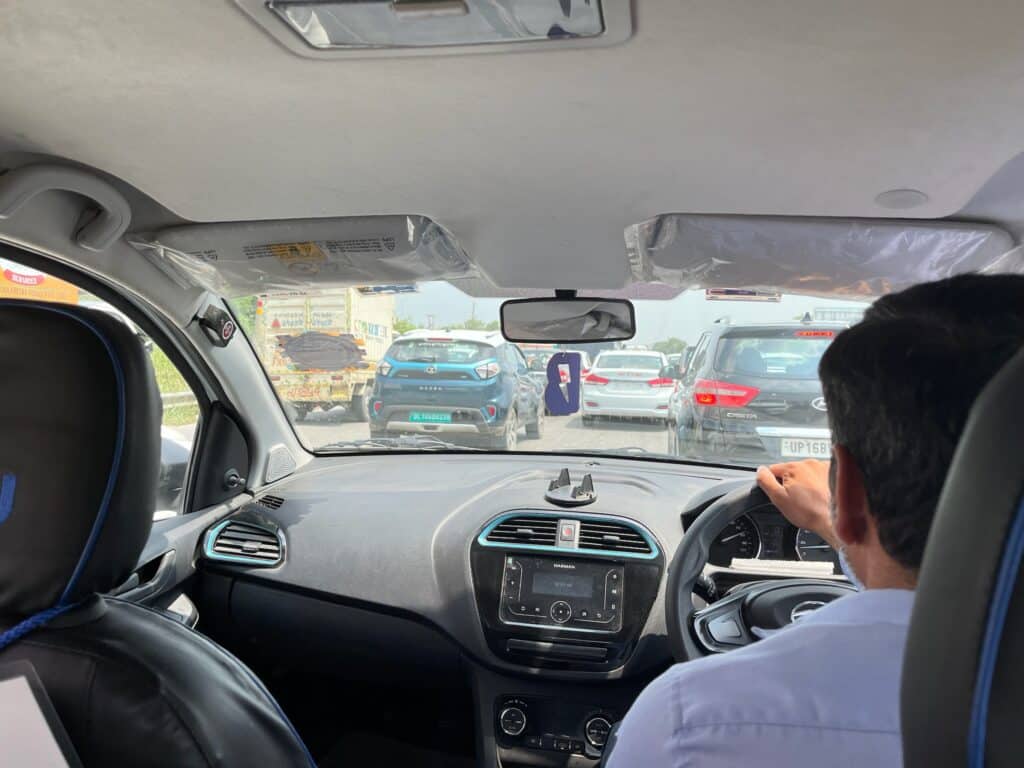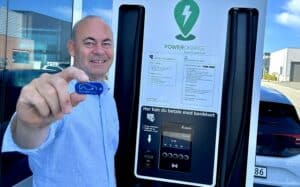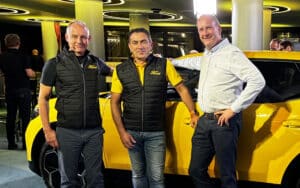50,000 new EV drivers so far this year: EV-enthusiasm in the world’s most populous country

At a gathering of electric vehicle (EV) drivers outside New Delhi, an informal show of hands reveals that 100 percent of EV drivers in India are satisfied with being EV drivers. However, they are also a bit frustrated.
As the temperature rises above 30 degrees, two representatives from the Norwegian EV Association find themselves in a well-cooled room with around 30 enthusiastic EV drivers.
Most are satisfied, but there are still some challenges to being an EV driver in India.
Charging is still a bit stressful, and many complain about the multitude of different charging apps. Queuing has also started to happen at charging stations.
That sounds familiar!
The stories among EV drivers in India closely resemble the challenges Norwegian EV drivers have faced in recent years.
Rejected by the housing association
EV driver Gaurav, from a suburb outside New Delhi, explains that for the first nine months as a new EV owner, he had to argue with his housing association to install a home charging box at his parking space.
He was met with many myths and difficulties before finally securing approval to install a charging box.
It’s a story that closely resembles many stories told by elbil.no from Norway, where many members of the Norwegian EV Association have faced similar challenges.
This led the Norwegian parliament to eventually pass laws regarding the right to charge in housing associations and condominiums, and reportedly, some Indian states have the same regulations.

The importance of the consumer’s voice
“It’s important that consumers have a voice when transitioning to electric transport,” says Markus Nilsen Rotevatn.
He is project lead for the Norwegian EV Association’s international project and one of two project members visiting India.
“Countries aiming to cut emissions from the transport sector depend on people choosing EVs in the store. If we solve the frustrations of EV drivers, even more people will choose electric. That’s why it’s smart for the climate that EV drivers organize,” he says.
Elbil.no has previously written about this international initiative here:
“The visit to India involves dialogue with several organizations working to reduce emissions from the transport sector. The goal of emphasizing the consumer perspective is to garner support for effective measures for faster electrification,” Markus explains.
Global EV Driver Survey 2024
Use five minutes and contribute to a better everyday for EV drivers worldwide.
The first and only global survey of EV drivers is finally launched by The Global EV Alliance.
If you take the time to answer, you will contribute to make EV an achievable option for everyone, all over the world.
The fight against air pollution as a key motivation
Among many of the EV drivers we meet, the desire for cleaner air is part of the motivation to switch from a fossil car to an electric one.
Sherry Frosh is one of them:
“I biked a lot during the pandemic. At every single traffic light, surrounded by cars, motorcycles, and trucks, I found myself standing in a dark cloud of heavily polluted air,” she says, adding:
“My kids take the bus to school and breathe in this polluted air multiple times a day.”
That’s when she thought about how much better it would be if the roads were dominated by electric cars instead of fossil-fueled vehicles.

India is one of the most polluted countries in the world.
The ICCT (International Council on Clean Transportation) writes on their website that 1.1 million Indians die annually from diseases related to air pollution, and transport is one of the major contributors.
The desire for better air quality was also one of the reasons Sherry and her family chose an electric vehicle when they needed a new car in 2020.
And she doesn’t regret it.
Now, she’s trying to convince her friends and family to buy an EV.
“We happily lend our car to neighbors so they can see what it’s like to drive an EV. Maybe it will increase the chance that they choose a zero-emission vehicle the next time they’re in the car market,” she says.
Half of all new three-wheelers are electric
EVs still make up a small fraction of India’s approximately 75 million vehicles. And EV drivers represent an even smaller proportion of the country’s 1.5 billion people.
But electrification has begun.
So far this year, 6.6 percent of all new vehicles are electric.
This is according to statistics from the website Cleanmobilityshift, which compiles data from Indian authorities. The figure includes cars, motorcycles, three-wheelers, and buses.
Among new three-wheelers, the electric share is 53.8 percent. For new passenger cars, the share is 2.21 percent.

The Indian government has now implemented measures to boost the sale of EVs.
Emission standards for vehicle production have been introduced, meaning automakers like Tata, Mahindra, and Suzuki are required to supply EVs to the Indian market. EVs have also seen reduced VAT.
Moreover, an increasing number of electric vehicle models are entering the Indian market.
Tata, one of India’s largest car manufacturers, has launched several electric car models. Last month, they introduced the SUV Curvv, which is reportedly priced similarly to its fossil-fuel counterpart.
EV forum with 25,000 members
Asheesh Arora is another enthusiast we meet this day in Delhi.
He runs a WhatsApp chat forum with more than 25,000 Indian EV owners.
“We initially started the forum to share driving experiences with EVs, but now it’s more of a place where EV drivers can discuss and get answers to their questions,” he says.
The forum is particularly useful for new EV drivers:
“New EV drivers often have questions about the car they’ve purchased and how to charge it. In the forum, experienced EV drivers are happy to share their knowledge,” Asheesh explains.




